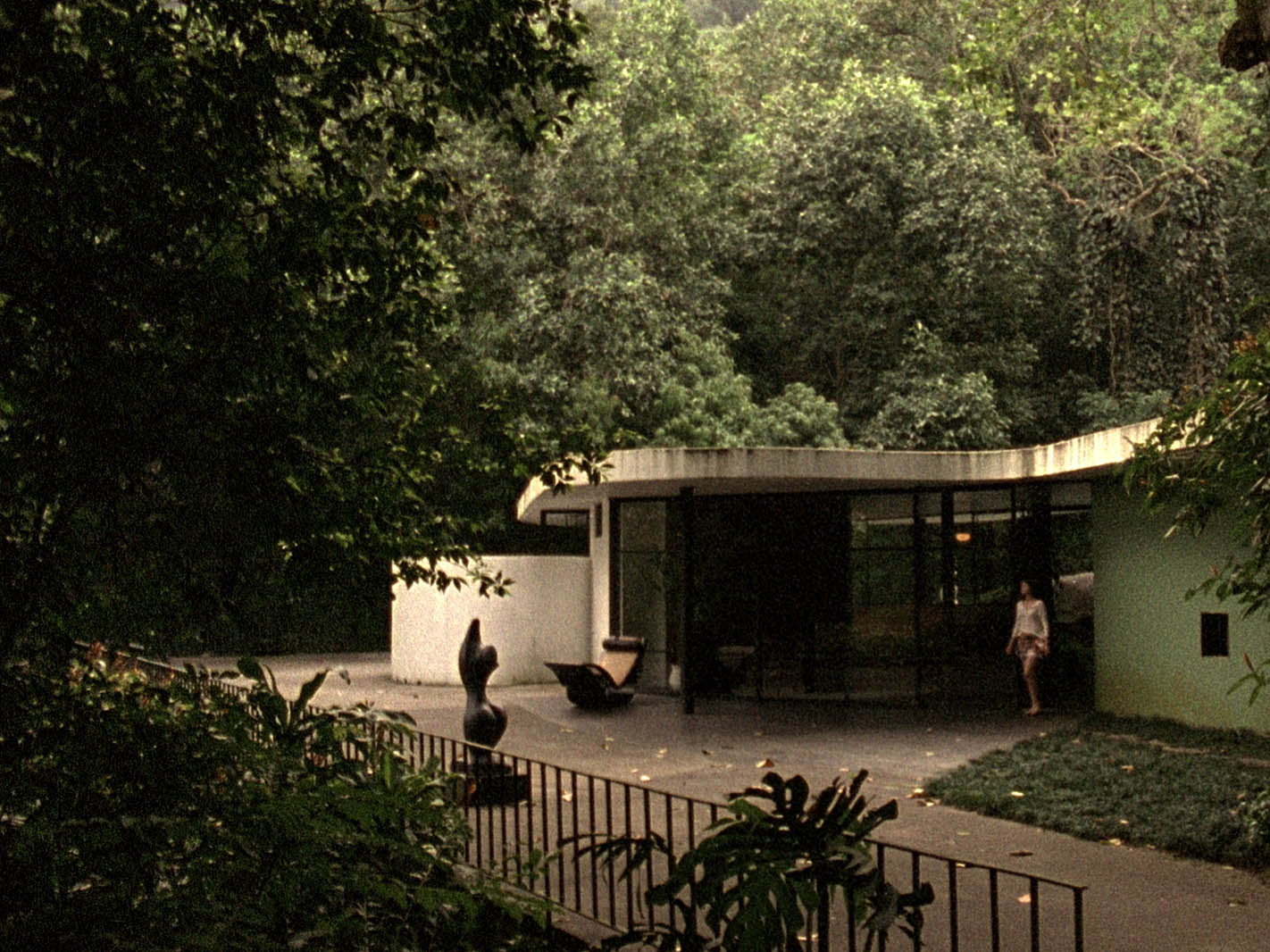


Tamar Guimarães (Film stills) Canoas 2010 13:30 16mm transferred to video Colour, sound, Portuguese with English subtitles Courtesy of the artist and Fortes D’Aloia & Gabriel, São Paulo.
Less than two hours from London, along the Sussex coast, stands the De La War Pavilion, an example of modernist dreams of unison and transformation. Built in 1935 by Jewish emigrés, Erich Mendelsohn and Serge Chermayeff, it was commissioned by Earl De La Warr to support his vision of Bexhill as the ultimate modern retreat. The Pavilion was always conceived as an entertainment space and few people could have predicted its impact (the Peter Jones building in Sloane Square was directly inspired by it). Bexhill became the first British resort to permit mixed-sex bathing in 1885, the first sea front town to have motor races in 1902 and the first town to have an outstanding internationalist modern architecture just before the Second World War.
The Pavilion is the perfect incubator for modernist thoughts and the current exhibition of Brazilian filmmaker Tamar Guimarães and Danish photographer Kaspar Akhøj explores such notions further. The artists, who have exhibited both as a duo and independently internationally, exhibit at the De La Warr three films alongside black and white photographs of modernist buildings in Southern France. Guimarães and Akhøj have researched the archives of the nearby Bexhill Museum and found the story of a local cobbler who was also operating as a healer and medium. To this mysterious local narrative, Guimarães' and Akhøj's work further explores the subject of the occult, from hearing voices to awakening spirits with the films Captain Gervasio’s Family (2013) and Studies for A Minor History of Trembling Matter (2017), both deal with spiritualist practices taking place in Palmelo, a farm town in central Brazil. The show brings together notions of modernism, the esoteric and community. A successful ensemble with a history in itself; from Madame Blavatsky's Theosophical Society and the artists of the Blue Rider Group in 1912; to choreographer Rudolph Laban with the community of the ‘Mountain of Truth’ in the Swiss Alps in 1913; to Johannes Itten and the Mazdaznan ethos at the Bauhaus in 1921. Spirituality in its expanded field seems to require a community to embrace it, practice it and nurture it. The towns of Bexhill and Palmelo appear to have these elements in common.
Guimarães' film Casas de Canoas shot in the building bearing the same name, conceived in 1951 by architect Oscar Niemeyer, was also the meeting point of a community: the elite of nearby town Brazilia which contributed to the image of Brazil as a global modern paradise. At some point in the film a woman recalls how Lygia Pape developed interests into psychotherapy and alternative modes of healing the psyche, a detail that not only refers to the great Brazilian artist but that also underlines the power of art to heal, boost and uplift the soul.
These links between the artistic and the spiritual, introspective research and community, buildings and grant utopian visions, all relate to Sussex and its past history of modernist retreat (Virginia Woolf at Monk House) and the revival of that for certain artists, such as John Stezaker, Becky Beasley and Chloe Dewe Matthews. After being immersed in De La Warr modernism, one can continue the journey along the coast, to Hastings to visit the Jerwood Gallery and to Eastbourne for the Towner Art Gallery; keeping in mind the role of these institutions to operate within their community, a form of socialism in action that De La Warr Pavilion embodies.
Dr. Ilaria Puri Purini
Curator of Programmes
De La Warr Pavilion, Marina, Bexhill On Sea, East Sussex TN40 1DP. Open every day 10am - 6pm. Exhibition continues until Sunday 3 June 2018. www.dlwp.com/